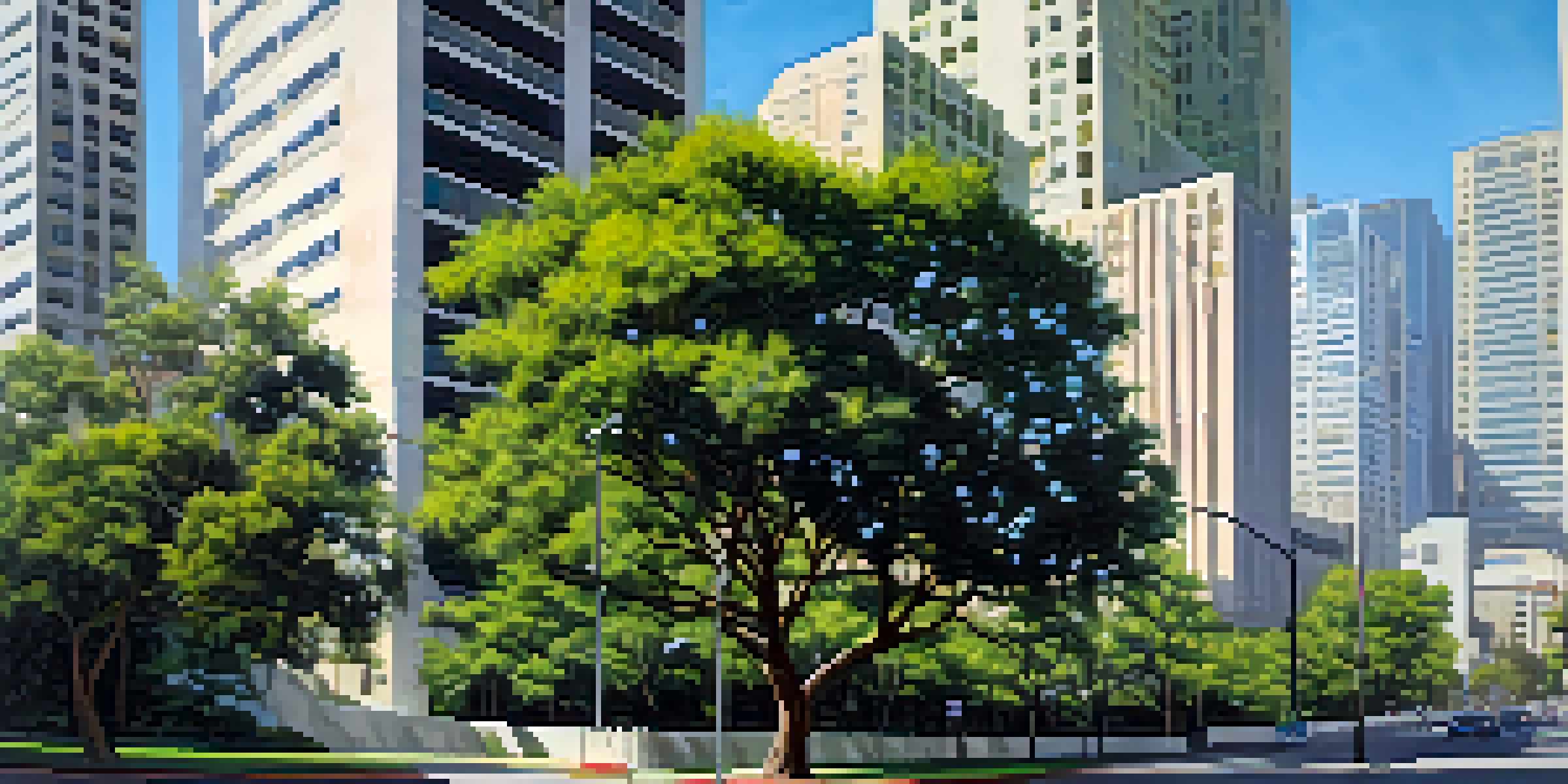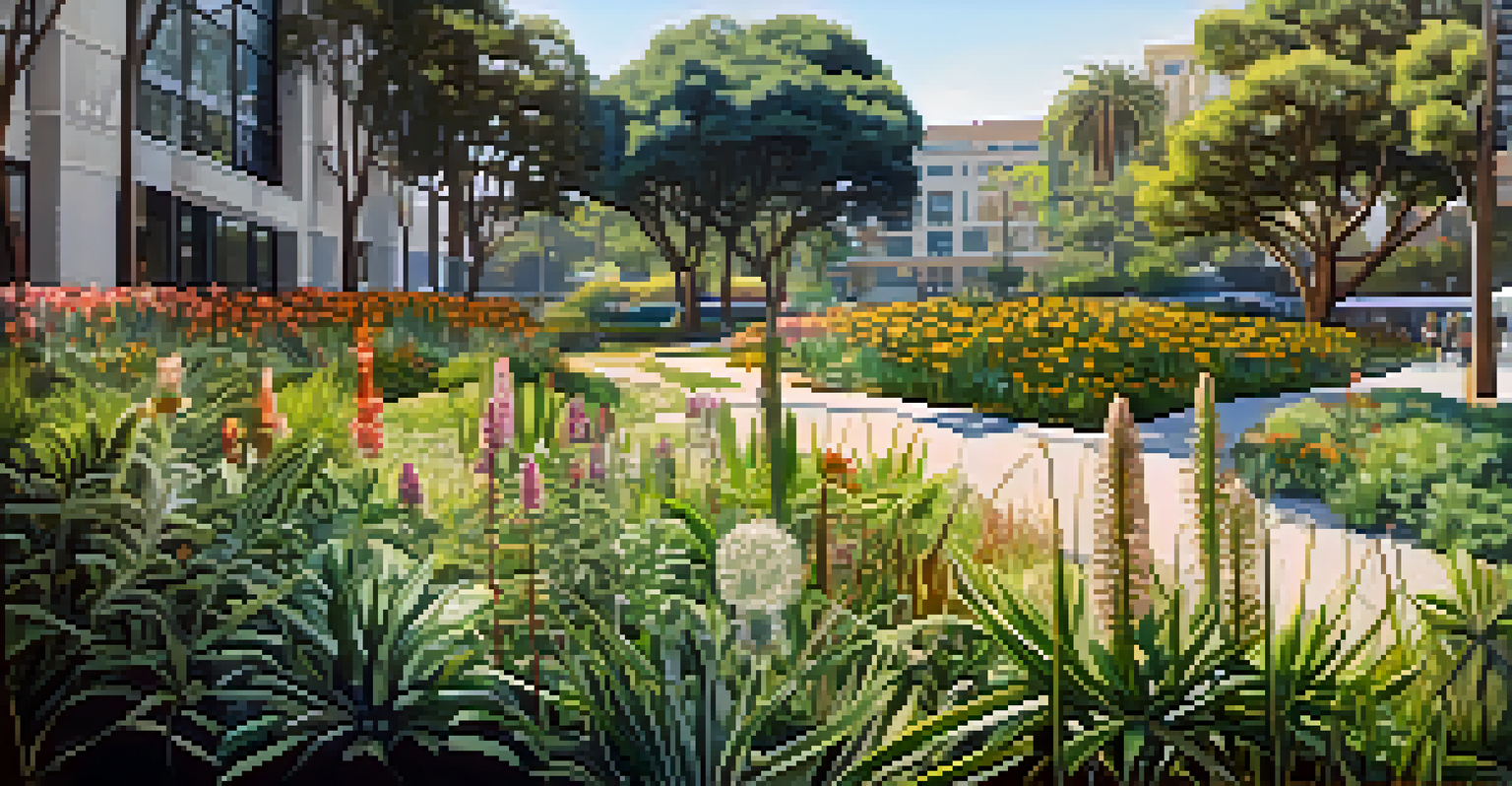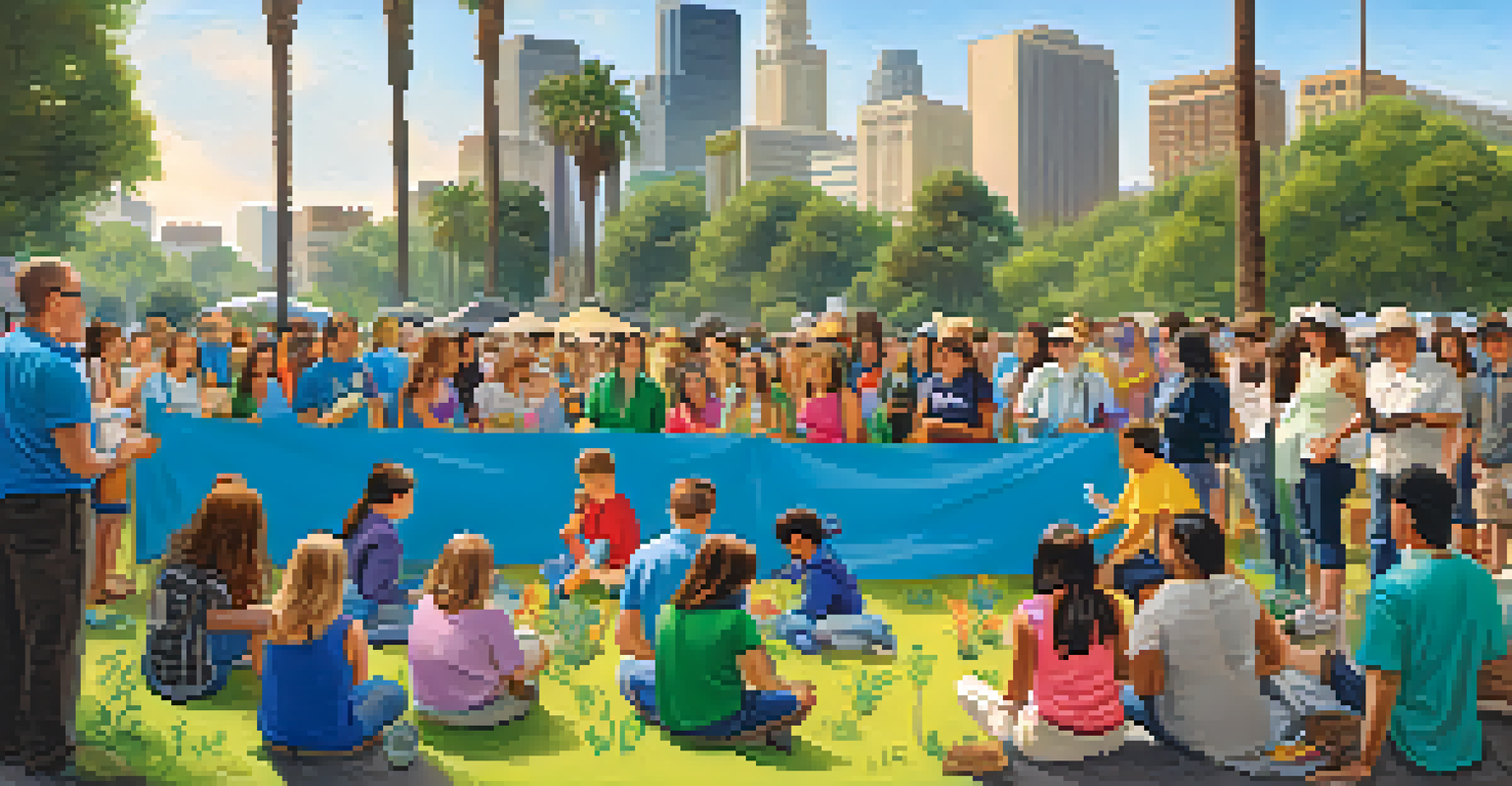Impact of Urbanization on Native Species in Los Angeles

Understanding Urbanization in Los Angeles
Urbanization refers to the process where rural areas develop into cities, resulting in increased population density and infrastructure. In Los Angeles, this transformation has been rapid and expansive, turning what was once a diverse landscape of habitats into a sprawling metropolis. This shift has profound implications for the local environment, especially for the native species that call this region home.
The greatest threat to our planet is the belief that someone else will save it.
The growth of the city has led to the replacement of natural habitats with residential areas, highways, and commercial spaces. This not only alters the landscape but also disrupts the delicate balance of the ecosystems that thrive there. As a result, the unique flora and fauna that have adapted to these environments face increasing challenges to their survival.
While urbanization brings economic opportunities and conveniences, it also raises concerns about biodiversity loss. Understanding these impacts is crucial for developing strategies that can help preserve the native species of Los Angeles amidst ongoing urban development.
Native Species at Risk in Urban Areas
Los Angeles is home to a variety of native species, including plants, birds, and mammals that have adapted to the local environment over centuries. However, urbanization poses significant threats to these species, often leading to habitat fragmentation. When natural habitats are divided by roads and buildings, it can isolate populations and make it difficult for them to find food, mates, and shelter.

For example, the endangered California Gnatcatcher, a small bird native to coastal sage scrub, is affected by habitat loss due to urban sprawl. As its habitat shrinks, the chances of survival decrease, making conservation efforts vital. Similarly, urban development encroaches on the habitats of numerous other species, forcing them to adapt or face extinction.
Urbanization Threatens Native Species
The rapid urbanization in Los Angeles disrupts habitats, leading to significant risks for local biodiversity.
These challenges highlight the importance of understanding the delicate balance between urban growth and biodiversity. Protecting native species in Los Angeles requires not only awareness but also proactive measures to preserve their habitats.
Impact of Pollution on Native Species
Pollution is another significant byproduct of urbanization that adversely affects native species in Los Angeles. Air and water pollution from vehicles, factories, and runoff can have devastating effects on the health and survival of wildlife. For instance, chemicals in stormwater runoff can contaminate local rivers and lakes, disrupting aquatic ecosystems and harming fish and amphibians.
In every walk with nature one receives far more than he seeks.
Moreover, air quality issues can affect the respiratory health of both humans and wildlife. Birds, for example, may struggle to thrive in polluted environments, as their ability to find food and mates diminishes. The impact of pollution often creates a ripple effect, influencing the entire food chain and ecosystem health.
Addressing pollution is crucial for the survival of native species. Efforts to improve air and water quality not only benefit human residents but also create a healthier environment for wildlife.
Urban Heat Islands and Their Effects
Urban heat islands (UHIs) are areas within cities that experience significantly warmer temperatures than their rural surroundings, primarily due to human activities and infrastructure. In Los Angeles, the extensive use of concrete, asphalt, and buildings contributes to this phenomenon. This increase in temperature can severely impact the local flora and fauna, often leading to heat stress and altered breeding cycles.
For instance, many native plant species rely on specific temperature ranges for germination and growth. When temperatures rise beyond these thresholds, it can hinder their ability to thrive, leading to a decline in plant diversity. As plants are a crucial part of the ecosystem, their decline can have cascading effects on the wildlife that depends on them for food and habitat.
Pollution Impacts Ecosystem Health
Air and water pollution from urban areas severely affect the health and survival of native wildlife.
Mitigating the effects of urban heat islands through green spaces and sustainable architecture can help restore balance. By integrating more vegetation into urban planning, we can create cooler environments that support both human and wildlife populations.
The Role of Invasive Species in Urban Areas
Invasive species pose a significant threat to native biodiversity as urban areas expand. These non-native species often thrive in disturbed environments, outcompeting native species for resources such as food and habitat. In Los Angeles, invasive plants like the Africanized honeybee and certain grasses can quickly dominate landscapes, leading to a decline in native flora and fauna.
For example, invasive plants may alter soil chemistry, making it less hospitable for native species. This competition can drastically reduce native plant populations, which in turn affects the animals that depend on them, creating a cycle of decline. Consequently, understanding the dynamics of invasive species is critical for conservation efforts.
Efforts to manage and control invasive species are essential to protect the native biodiversity of Los Angeles. By promoting awareness and implementing removal programs, we can help restore balance to local ecosystems.
Conservation Efforts in Urban Settings
Despite the challenges posed by urbanization, there are numerous conservation efforts underway in Los Angeles aimed at protecting native species. Organizations and local governments are collaborating to create wildlife corridors, which serve as safe passageways for animals to navigate urban landscapes. These corridors help connect fragmented habitats, allowing for greater genetic diversity and a more resilient ecosystem.
Additionally, initiatives to restore native vegetation in parks and along roadways are gaining traction. By reintroducing native plants, these projects not only help to support local wildlife but also enhance the aesthetic value of urban areas. Community involvement in these efforts is crucial, as local residents can play a vital role in maintaining and protecting these natural spaces.
Community Involvement is Crucial
Engaging the community in conservation efforts fosters stewardship and supports the protection of native species.
These conservation strategies highlight the potential for coexistence between urban development and wildlife. With continued commitment and collaboration, Los Angeles can emerge as a model for urban biodiversity conservation.
The Importance of Community Awareness and Involvement
Community awareness plays a pivotal role in the conservation of native species affected by urbanization. Engaging residents in discussions about the importance of biodiversity can foster a sense of responsibility and stewardship for local environments. Educational programs, workshops, and community events can help to inform the public about the challenges facing native species and what can be done to support them.
For instance, local schools can incorporate environmental education into their curricula, teaching students about native species and their habitats. This not only cultivates a deeper appreciation for the natural world but also empowers future generations to take action in conservation efforts. Moreover, citizen science projects invite community members to participate in monitoring local wildlife, creating a tangible connection to the environment.

When communities come together to advocate for the protection of native species, they can influence policy changes and foster sustainable practices. Collective action is key to ensuring that Los Angeles remains a thriving habitat for its unique wildlife.